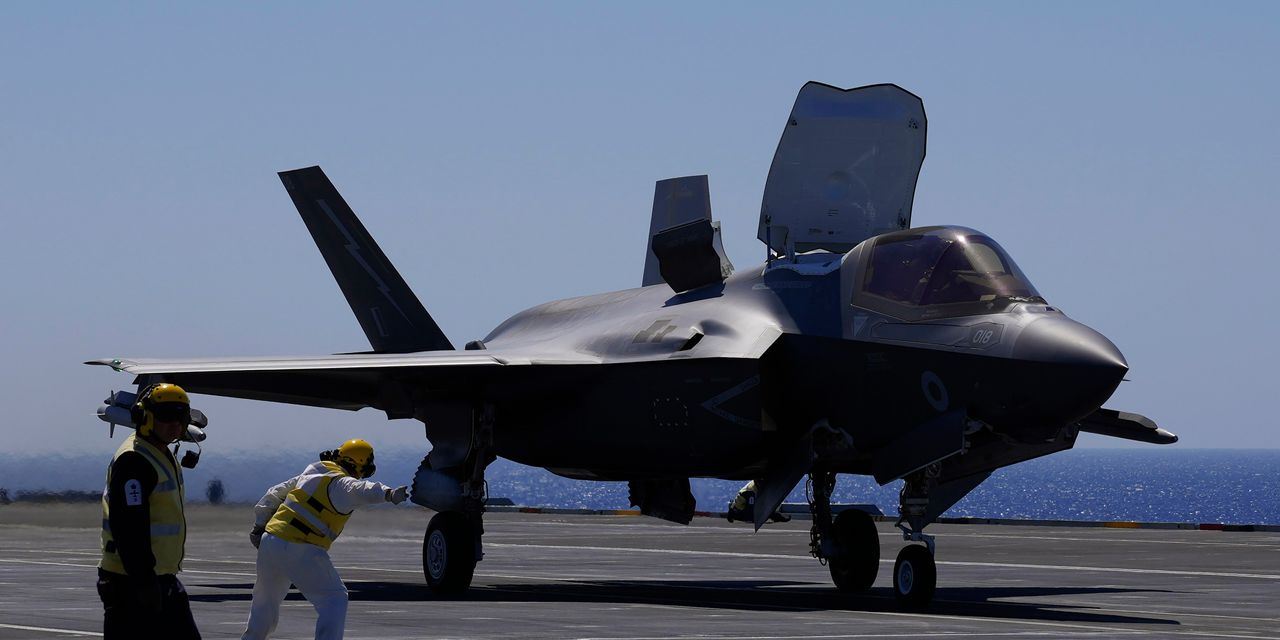Weapons makers are struggling in the current equity market, but their defensive perimeter may be more secure than it seems.
On Monday,
Lockheed Martin
LMT -3.09%
reported a $1.8 billion second-quarter profit, narrowly missing Wall Street’s expectations because of a $225 million loss on a classified program. The company’s shares slipped, despite Chief Executive
James Taiclet
raising the earnings-per-share forecast for 2021.
Investors have taken a glass-half-empty approach to defense stocks for a couple of years now. Before the pandemic, they enjoyed six years of outstanding performance thanks to a wave of money aimed at retiring the last of Cold War technology, which took inflation-adjusted U.S. military spending up to World War II levels. Arguably, defense budgets can only go down from here. This year’s political shift to a Democratic presidency and Congress and a renewed focus on socially aware investment have further soured sentiment.
There have been periods of respite, though shorter than could have been expected. Last year, Covid-19 made the economy look like an unpredictable mess and stocks tied to government spending more attractive. This March, defense was seen as insurance against runaway inflation—a result of many military contracts reimbursing cost increases. With the inflation scare fading and investors focusing on the economic reopening, though, the sector’s valuations are at their lowest on record relative to the S&P 500, FactSet data shows.
In May, the Biden administration’s defense-budget request for the 2022 fiscal year suggested that, out of a total of $715 billion, the Department of Defense “investment budget”—the part most relevant to private companies, which thus tends to drive defense stocks—will fall to $246 billion from $248 billion in 2021. Procurement is being slashed 6%, while research-and-development funds increase 5%, underscoring the shift away from legacy programs used to fight global terrorism and toward new technologies.
Lockheed seems particularly affected: Spending on aircraft is set to be cut 8%, Bernstein Research figures show, with orders for its problem-ridden F-35 fighter being reduced to 85 from 96 in 2021. While all major weapons makers are trading at a huge valuation discount to the S&P 500, which is common in periods of peaking defense budgets, Lockheed has become the cheapest of them all, both in terms of free cash flow and earnings relative to enterprise value.
Yet the Bethesda, Md.,-based company remains well positioned in space and hypersonics, areas in which spending is almost certain to increase to keep pace with China and Russia. And the budget request may exaggerate the extent of the cuts to legacy programs that will actually be approved by Congress.
Lawmakers tend to be very reluctant to risk job losses among their constituents, and a booming economy that is focused on achieving full employment is an unlikely backdrop for military spending to decline on anything like the scale it did during the 2008-2014 period. In its markup of the budget last week, the Democrat-controlled Senate Armed Services Committee endorsed spending $25 billion more on defense than requested by the Administration, including extra orders for the F-35, and fought back against the Air Force’s plans to retire old aircraft.
The stage may not be set for defense stocks to outperform again for some time yet. At current valuations, though, reports of demilitarization may be more than priced in.
Write to Jon Sindreu at jon.sindreu@wsj.com
Copyright ©2021 Dow Jones & Company, Inc. All Rights Reserved. 87990cbe856818d5eddac44c7b1cdeb8













































